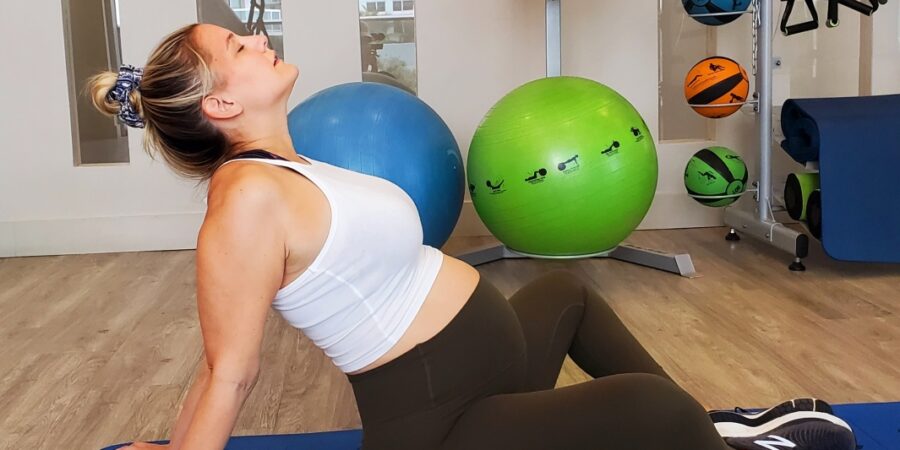Can I start fitness training now that I’m pregnant?
The answer is YES! When you are cleared to exercise by your physician and you follow a safe training program designed by a specialized trainer in prenatal fitness, you will have a healthier and more comfortable pregnancy.
Let’s cover the type of training you can do, some of the proven benefits you and your baby will enjoy along the process, and three basic exercises that are very beneficial and easy to do.
Type of training and Workout phases
When it comes to exercising during pregnancy, women should engage in “aerobic and strength conditioning training at least 30 minutes on most, if not all, days of the week American College of Obstetricians and Gynecologists (ACOG) However, the workout recommendations will vary to some extent based on the pregnant mother’s previous fitness level and the stage of pregnancy.
For example:
- “Prenatal Training”: it is done throughout the pregnancy and before birth. It consists of a safe and regular exercise program that keeps the mother-to-be in shape and prepares her for labor and delivery.
- “Postpartum Training”: it is done after birth when the mother resumes traditional exercise once she’s been examined and officially cleared by the doctor.
When you are pregnant you start to worry about your body weight as you have more food cravings and move slower. You also don’t think you can make it to a workout because you feel fatigued, bloated, and swollen. However, when you incorporate a physical routine on a daily bases, you will notice the physical and emotional improvements and benefits that a good exercise program has to offer to you.
Benefits of exercising during and after pregnancy
For example:
While Pregnant
- Minimize weight gain.
- Prevent many common pregnancy discomforts such as low back and SI joint pain.
- Help to avoid pelvic floor dysfunction, diastasis recti, urinary incontinence, and constipation.
- Promote better sleep, and increase energy levels (ACSM, 2014; Goodwin, Astbury, & McKeeken, 2000).
- Improve posture, self-esteem, and body image (ACSM, 2014; Goodwin, Astbury, & McKeeken, 2000).
- Decrease feelings of stress, anxiety, insomnia, and depression (ACSM, 2014; Goodwin, Astbury, & McKeeken, 2000).
- Reduce nausea, morning sickness, leg cramps, swelling, and varicose veins.
During Labor
- Faster and easier labor (Clapp, 1998).
- Low chances of needing a C-section or other intervention.
After Delivery
- Bounce back faster and handle the many physical demands of new motherhood with less chance of pain or injury (back, arms and shoulders) (Clapp, 2002).
- Low risk of postpartum depression.
- Better quality of sleep.
But wait, there is more…
- The newborns also improve their cardiorespiratory system, resulting in a higher cardio fitness level that extends into childhood (Clapp & Little, 1995).
- They are able to maintain lower fat and weight levels as children (Moyer, Reoyo, & May 2016).
- And they scored higher on general intelligence, memory tests, and oral language tests than children of non-exercising mothers (Reynolds, 2013).
Amazing, isn’t it? ;0)
Basic exercises that you can do by yourself to get started
Cat-Cow is a beginner exercise that requires no equipment and targets your Back and Chest
Bird Dog is an intermediate exercise that requires no equipment and targets your Abs, Back, Butt/Hips
Child Pose is a beginner exercise that requires no equipment and targets your Abs, Back, Butt/Hips, Legs – Thighs
Disclaimer: Before beginning a prenatal exercise routine, speak to your physician about whether it’s safe for you to exercise.
Let’s Get Started
For safe and effective workouts in preparing your body for the specific stresses of pregnancy, childbirth, and early parenthood, explore my prenatal training programs and services and get in touch.
Resources
American Council on Exercise (ACE)
The American College of Obstetricians and Gynecologists(ACOG)


